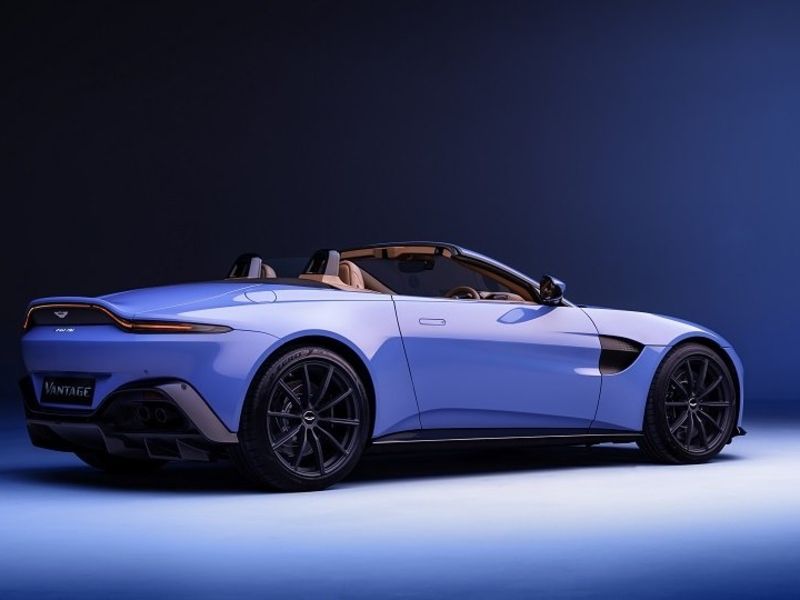
Aston Martin is undergoing a transformation under former Mercedes-AMG head Tobias Moers, who joined as CEO in August last year after the struggling UK automaker was bailed out by Canadian billionaire Lawrence Stroll. Aston’s closer technology links with Daimler, a new focus on efficiency, along with promoting the company through Formula One, can bring about sustainable profitability that has previously been difficult for the company to reach, Moers told Automotive News Europe Correspondent Nick Gibbs.
Your predecessor Andy Palmer said that Aston Martin’s historical problem was that it never generated enough money to invest in the next generation of cars. What is your solution?
What is different are the building blocks. One is efficiency — how we run our factories and logistics. It will be a different company. We will make 30 percent efficiency gains over the course of the next six months. The ultimate goal is to make Aston Martin the most efficient and most agile auto manufacturer in our luxury/performance world. And we will get there.
Another building block is strategy, and we have a stronger engineering team now, people coming from Mercedes-AMG, familiar with the Mercedes technology, including the head of vehicle development [Drummond Jacoy] and head of powertrain [Ralph Illenberger].
What does that greater cooperation with Daimler bring?
We are more efficient in how we engineer cars because of the technology transfer. We do not have to invest in an EV architecture. We do not have to invest in a plug-In hybrid. So we can use all our resources to expand our portfolio.
When is the tipping point for Aston’s recovery?
2023 is a firework year regarding our product rollouts. Then we will be back on track and we will be in a situation where we can refinance our business. We will be able to run and maintain our portfolio and we will be able to create new platforms as well. I am more than confident. We will probably have more derivatives out of Vantage, more derivatives out of the DBX [SUV] and establish a new car line on the DBX platform.
Bentley has access to its owner VW Group’s platforms but struggles to maintain sustainable profitability. What can you do different?
In our business you must align demand and supply and make sure that you do not have too many cars in stock because if companies suffer from discounting it’s harder. The brand’s desirability to buyers also is crucial for the future. Formula One will support us to get to a different level.
What are Aston’s strengths?
Aston Martin is the most efficient company I ever saw in my life in bringing to life different body styles and creating a new platform on reasonable costs. This is where the company is really, really strong. Our company is not strong in electrical architecture. It’s not strong in making a new combustion engine. So you can add that to the Mercedes technology transfer. And everything we get from Mercedes is reasonably priced.
Is a derivative car line based on the DBX SUV the way to go to broaden the product line up?
Yes. but I don’t want to talk in detail because we still have competitors. Previously the company there was one variant of the DBX and probably a second one and that is it. We saw the Mercedes technology agreement as a way to have a much broader portfolio off the DBX.
How will you make Aston Martin’s two factories, Gaydon and St. Athan, more efficient?
One thing we are looking at is insourcing. For example, if the supplier asks too much money for seat trims, it could be more efficient to do that in-house. So we put commodities together and make sure that the plants are properly loaded, but in the most efficient way. Today we run sports cars on two assembly lines [at the Gaydon plant]. If you come to visit in two months, it will be just one. We changed everything, how we assemble cars, how we run logistics, how we paint cars, how we run our paint shops.
Do you think the luxury sports-car market’s center of gravity has shifted away from models such as the DB11?
I see it as balanced in future. That’s what I see in our order intake at the moment, the sports cars are doing better than I thought. It’s a proper mix between the DBX and sports cars. It’s a bit more DBX because of China, but we have a lot of variants of our sports cars coming to market.
The Vantage roadster is doing really well and we have another variant to come in the next two weeks.
The GT layout sports car segment for us is normally 3,500 to 4,000 cars and it has always been that size.
Even now?
Our cars are a bit aged so I do not expect that number [this year], but we will facelift the DB11 by the end of 2022/beginning of 2023 and then we will have a much broader line-up of sports cars. So I’m confident about that.